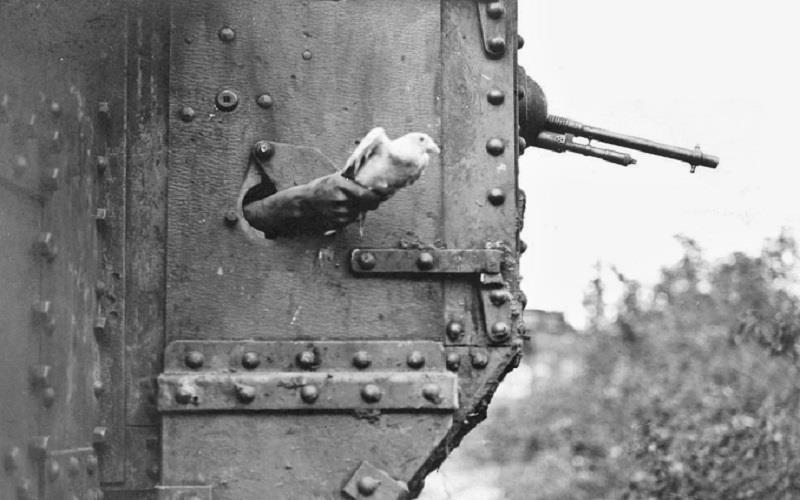Pigeon Post
› Detail › Pigeon PostJune 7, 2016 - September 15, 2016
In its first part, it introduces the phenomenon of pigeon post, from its beginnings in ancient times through its rediscovery in the Middle Ages to its use in modern military conflicts of the 19th and 20th centuries. It highlights advanced civilizations of antiquity (Persia, Greece, Rome, India, China) that appreciated these remarkable birds for their speed, endurance, and exceptional sense of direction. It continues with a description of air transport of messages in Arab medieval times and its return to Europe during the Crusades.
In more recent times, it focuses on the use of carrier pigeons especially during World War I and World War II, when their presence on the battlefield often meant the last chance for the rescue of units surrounded by the enemy and cut off from communication. With the development of telecommunications technology in recent decades, the pigeon has lost its military significance; however, it still holds an irreplaceable place in contemporary society. For example, until 2006, carrier pigeons provided emergency communication with remote police districts in India, and they are still used by smugglers to outsmart border patrols.
Other parts of the exhibition introduce the environments in which various species of pigeons occur. Visitors will learn about the development of pigeon lofts, significant and famous breeders, or social events where humans have used and still use these animals. Through the ancient game of “triganieri,” where released pigeons attract other birds to their nests, it also delves into the history of leisure activities. Similarly, it provides information about the specific shooting discipline of “trap,” which evolved from the pastime of shooting pigeons. It further elaborates on the special abilities that have given the pigeon such significance.
The small feathered creature is thus remembered not only as a messenger or “photo-spy” but also as part of religious systems or a symbol of the peace movement. Last but not least, it introduces the use of pigeons, doves, and squabs in various forms of artistic expression. The dove has not only become the motif of one of Picasso's most famous paintings but has also inspired other painters, sculptors, composers, playwrights, writers, and filmmakers.



